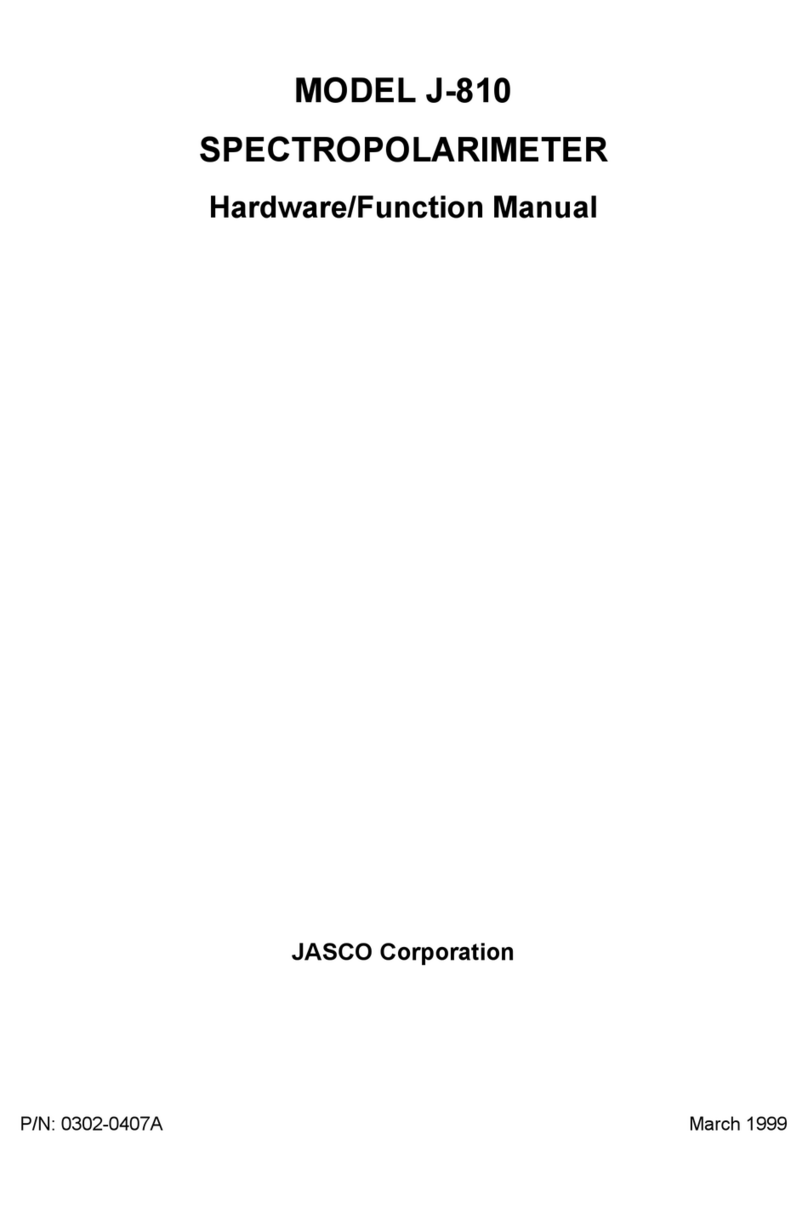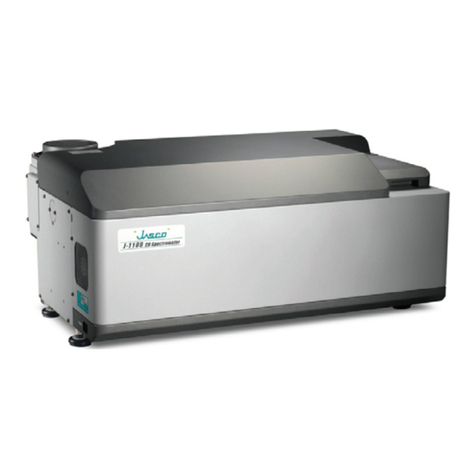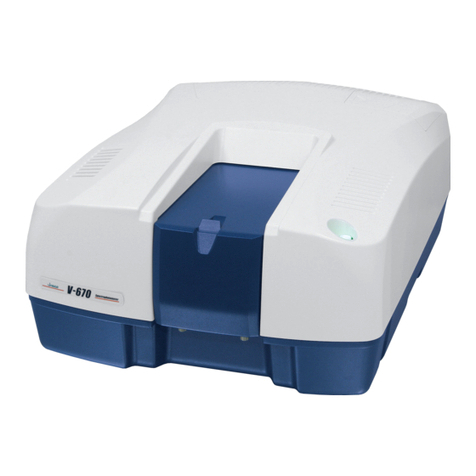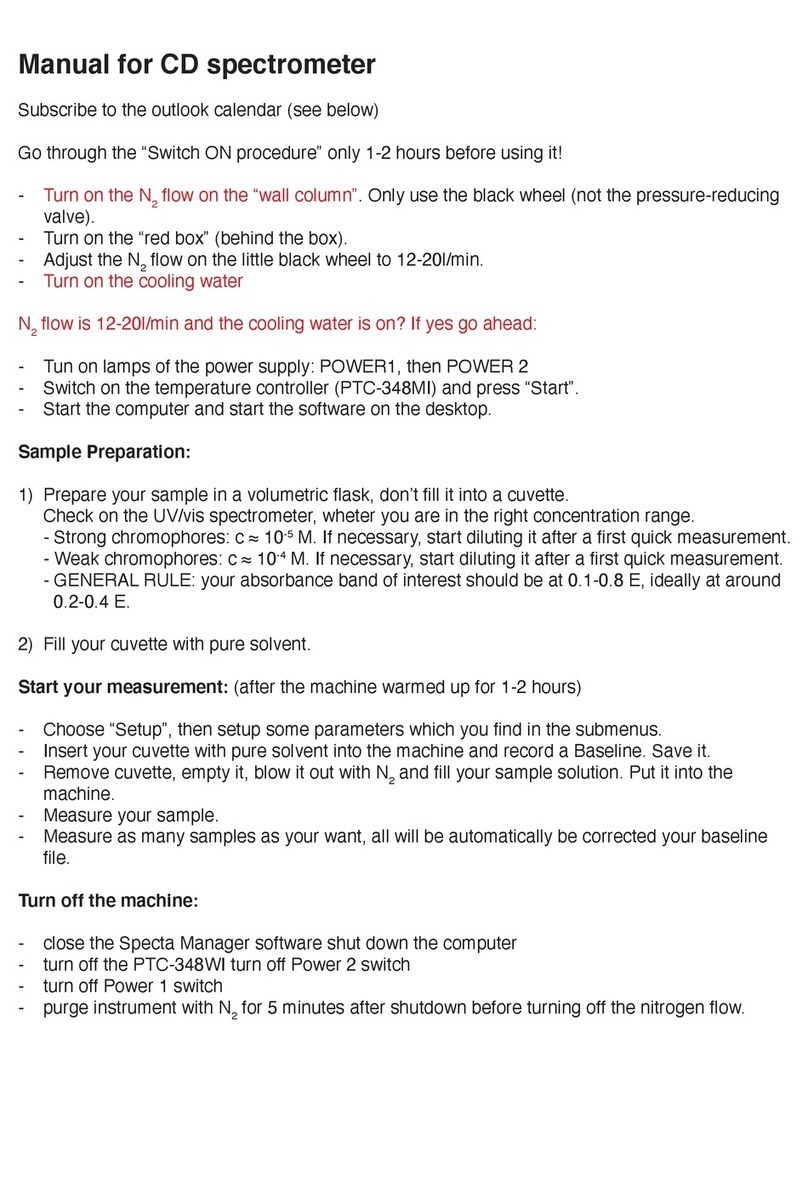Figure 4 Left side panel
(1) Precautions
1) Always keep the polarimeter clean. Take particular care to keep the sample chamber
clean and do not leave sample cells in the chamber. When measuring samples that
may generate harmful gas, cover and remove the cell from the sample chamber
immediately after measurement.
2) If the instrument must be left for about an hour, be sure to leave the lamp on. The
service life is shortened when the lamp is frequently turned on and off. Note that the
lamp requires about 15 minutes to stabilize after being turned on.
3) Always keep the cells clean. Clean a cell immediately after use and store in a clean,
dust-free location.
4) When sample has spilled in the sample chamber, wipe out immediately using gauze or
other material. When acids or bases have been spilled, wipe out with gauze soaked in
water then allow to dry.
5) When the optical rotation of a sample exceeds ±50×, the correct optical rotation may
not be shown if the sample with the large optical rotation is placed in the sample
chamber first. In this case, use the following procedure.
1 Beforehand, prepare a known sample with an appropriate optical rotation range of the
+30 ∼+50 °or -30 ∼-50 °. As known samples, + and - polarizing plates are supplied
as special accessories. Also, saccharose solution (concentration of about 50%, +) or
fructose sugar (concentration of about 50%, -) can be used as easy samples. Place
the samples in the cell with a 100mm light path length and use.
2 when the optical rotation if the unknown sample to be measured is to the + side, set the
known sample with a + optical rotation prepared above in the sample chamber,
measure, and let the optical rotation value stabilize to +30 ∼+50 °.
ULTRAVIOLET RADIATION
WHEN Hg LAMP IS USED, HARMFUL
ULTRAVIOLET RADIATION IS EMITTED
THERERORE, TURN THE POWER SWITCH
OFF BEFORE OPENING THIS COVER.



































